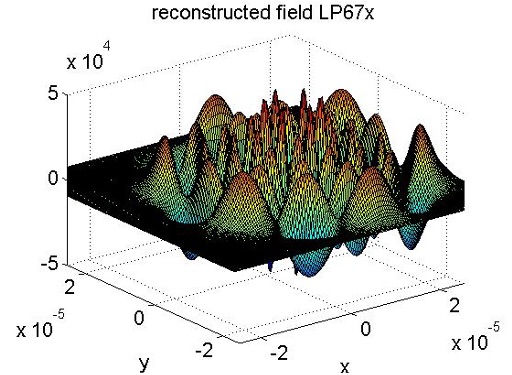
For flexibility and ease-of-use, single-mode and multi-mode optical fibers in data-centres are usually terminated with connectors. In an optical link each connection involves two connectors that are joined in an adapter. This may contribute to connection attenuation and backscattering at the interface. From a modelling perspective, the computation of optical fiber connection attenuation amounts to solving a mode-matching problem. If one neglects backscattering, the mode matching may be reduced to projection techniques which were studied extensively in the 1970s.
Since then, the quality of the refractive index profile in optical fibers has improved significantly, resulting in lower dispersion and lower attenuation along the length of the fiber. However, to accommodate the increase in bandwidth on the transceiver side, and to allow for multiple low-loss connectors in a link, the optical link power budget has had come down drastically, driving the need for low-loss (<0.1 dB) connectors. At this point, it was not clear whether the conventional wisdom that projection techniques are sufficiently accurate for modern fiber links still holds. At the same time, we also observed a rising interest in connection problems involving fibers and optical integrated circuits for which the higher contrasts and dissimilar geometries would certainly rule out the projection techniques.
From the 2010s, we have collaborated with TE Connectivity and later CommScope, in the development of a universal Wilson-basis interface for computing optical fiber connections efficiently, even if there is a gap between the fibers [6-8]. Here, universal indicates that the Wilson-basis expansion technique can be applied to arbitrary dielectric planar interface problems. Further, we have constructed ray-based encircled-flux compliant sources for multi-mode optical fiber launches [9].

In the figure, we have illustrated the equivalence of the reflection-transmission problem of an incident complex-source beam on the end-face of a multi-mode fiber and an equivalent Wilson-basis source distribution in the universal interface, as well as the LP67 mode scalar mode of a multi-mode fiber in terms of its Wilson-basis coefficients (HE and EH modes are available as well).
[1] R.W. Smink, B.P. de Hon and A.G. Tijhuis, 2007, doi.org/10.1364/JOSAB.24.002610
[2] B.P. de Hon and M. Bingle, 2003, https://doi.org/10.1029/2001RS002570
[3] R.W. Smink, B.P. de Hon, M. Bingle, R. Mussina and A.G. Tijhuis, 2008, doi.org/10.1007/s11082-009-9294-1
[4] K. Solis Trapala, R.W. Smink, J. Molina Vázquez, B.P. deHon, A.G. Tijhuis and H.J.S. Dorren, 2010, doi.org/10.1016/j.optcom.2010.05.080
[5] C.P. Tsekrekos, R.W. Smink, B.P. de Hon, de, A.G. Tijhuis and A.M.J. Koonen, 2007, doi.org/10.1364/OE.15.003656
[6] S.J. Floris and B.P. de Hon, 2018, doi.org/10.1007/s11082-018-1364-9
[7] S.J. Floris and B.P. de Hon, 2018, doi.org/10.1007/s11082-018-1368-5
[8] S.J. Floris, B.P. de Hon, M.C. van Beurden and T. Bolhaar, 2022, doi.org/10.1007/s11082-022-04135-3
[9] S.J. Floris, B.P. de Hon, T. Bolhaar and R.W. Smink, 2020, doi.org/10.1016/j.yofte.2019.102116